NEW MODELS: Hyundai Tucson back with edgy lines
by Motor News Reporter,
2016-03-10 05:00:00.0
REMEMBER the Hyundai Tucson? In 2005 it was the same vehicle as the Kia Sportage before the two companies went in different directions in terms of design. Kia kept the Sportage name, but Hyundai changed its medium SUV name to the ix35. Well, now the Tucson name is back and it is definitely more of a looker than the vehicle it replaces.
"The Tucson model name has now been revived, and with it a new level of sophistication, quality and comfort in this compact SUV that will again make it a favourite among local buyers," says Stanley Anderson, marketing director of Hyundai Automotive SA.
The Tucson is introduced in five derivatives, ranging from the entry-level 2.0l Nu Premium with a either a manual six-speed gearbox or automatic six-speed transmission, to the range-topping 1.6 T-GDi Elite derivative with a seven-speed dual-clutch box (7DCT) and all-wheel drive.
"Design expresses our progressive spirit and passion, and it is transforming our brand," says Peter Schreyer, president and chief design officer at Hyundai Motor Group. "The all-new Tucson has a distinctive and athletic presence achieved through refined, flowing surfaces, bold proportions, sharp lines and, most importantly, our newest generation hexagonal grille."
The interior has also been completely revised with new soft-touch, high quality materials across the cabin surfaces, as well as more equipment.
The centre console has been redesigned and features a sound system with Bluetooth connectivity that enables music to be streamed from a smartphone or iPod, and connecting with a cellphone with the added comfort and safety feature of steering wheel operating buttons.
The new platform is also said to provide more space. With all seats upright, the luggage area has a capacity of 513l which increases to a maximum of 1,503l with the rear seats folded. Practicality is boosted by a lower boot-sill height, two-level boot floor and a stowable cargo cover.
New safety technologies include blind spot detection, vehicle stability management and rear-cross traffic alert. The latter reduces the risk of collision with approaching traffic when reversing out of narrow areas with low visibility.
The new bodyshell structure also features 51% advanced high strength steel, increasing torsional rigidity (up by 48%) to offer greater impact resistance.
The Tucson is also the brand’s first SUV to get the company’s turbocharged 1.6 T-GDI engine. The engine is in fact a petrol unit with four-cylinders delivering 130kW and 265Nm.
Premium derivatives come with a 2l naturally aspirated four-cylinder petrol engine that delivers 115kW at 6,200r/min, and torque of 196Nm at 4,000r/min.
A seven-speed dual-clutch transmission (7DCT) is available and offers drivers fully automatic operation or sequential manual gear changes.
Two driving modes, Eco and Sport, are available with the 7DCT. These can be selected with a button on the centre console. In Eco mode, gear shifts happen sooner to ensure better fuel economy, while the gears are shifted at higher engine revolutions in Sport mode.
The 7DCT and regular automatic transmission also feature Normal and Sport modes which change not only the gear change patterns but the steering response too.
The range-topping 1.6 T-GDi Elite gets a four-wheel drive system, which keeps the highest traction on rough, loose or slippery surfaces while enhancing cornering performance. The front wheels receive 100% of torque during normal road driving with up to 50% sent to the rear wheels, automatically, depending on conditions. A manually-selected Lock Mode splits torque 50/50 for enhanced stability at speeds up to 40km/h.
The company says it has also developed the new model with a focus on ride comfort without compromising driving dynamics. The new rack-mounted motor-driven power steering is said to be precise and direct while the front suspension features a McPherson strut system, receiving a new rebound spring and four bush mountings on the subframe to enhance comfort and reduce noise, vibration and harshness (NVH). The multilink rear suspension system has also been improved to enhance overall dynamics.
Hyundai says its latest SUV was developed using the company’s engineering and testing facilities in Europe. Every element of the running gear was tested to enhance high speed and cornering stability, while also maximising the benefits of the longer wheelbase and wider track to optimise ride and handling characteristics.
The new Tucson looks like a revitalised contender. It will be fascinating to see the duel between it and the forthcoming new Kia Sportage. Pricing will be a key issue, with the Tucson starting at R359,900 and rising to R499,900.
-
Hyundai has ditched the curvy looks of the ix35 in favour of a sharper design for its Tucson replacement. Picture: NEWSPRESS UK
-
The interior is more spacious with more equipment. Picture: NEWSPRESS UK
-
A panoramic sunroof on some models enhances the looks and interior feel. Picture: NEWSPRESS UK
-
The rear seats are said to offer more space and have a reclining function. Picture: NEWSPRESS UK
REMEMBER the Hyundai Tucson? In 2005 it was the same vehicle as the Kia Sportage before the two companies went in different directions in terms of design. Kia kept the Sportage name, but Hyundai changed its medium SUV name to the ix35. Well, now the Tucson name is back and it is definitely more of a looker than the vehicle it replaces.
"The Tucson model name has now been revived, and with it a new level of sophistication, quality and comfort in this compact SUV that will again make it a favourite among local buyers," says Stanley Anderson, marketing director of Hyundai Automotive SA.
The Tucson is introduced in five derivatives, ranging from the entry-level 2.0l Nu Premium with a either a manual six-speed gearbox or automatic six-speed transmission, to the range-topping 1.6 T-GDi Elite derivative with a seven-speed dual-clutch box (7DCT) and all-wheel drive.
"Design expresses our progressive spirit and passion, and it is transforming our brand," says Peter Schreyer, president and chief design officer at Hyundai Motor Group. "The all-new Tucson has a distinctive and athletic presence achieved through refined, flowing surfaces, bold proportions, sharp lines and, most importantly, our newest generation hexagonal grille."
The interior has also been completely revised with new soft-touch, high quality materials across the cabin surfaces, as well as more equipment.
The centre console has been redesigned and features a sound system with Bluetooth connectivity that enables music to be streamed from a smartphone or iPod, and connecting with a cellphone with the added comfort and safety feature of steering wheel operating buttons.
The new platform is also said to provide more space. With all seats upright, the luggage area has a capacity of 513l which increases to a maximum of 1,503l with the rear seats folded. Practicality is boosted by a lower boot-sill height, two-level boot floor and a stowable cargo cover.
New safety technologies include blind spot detection, vehicle stability management and rear-cross traffic alert. The latter reduces the risk of collision with approaching traffic when reversing out of narrow areas with low visibility.
The new bodyshell structure also features 51% advanced high strength steel, increasing torsional rigidity (up by 48%) to offer greater impact resistance.
The Tucson is also the brand’s first SUV to get the company’s turbocharged 1.6 T-GDI engine. The engine is in fact a petrol unit with four-cylinders delivering 130kW and 265Nm.
Premium derivatives come with a 2l naturally aspirated four-cylinder petrol engine that delivers 115kW at 6,200r/min, and torque of 196Nm at 4,000r/min.
A seven-speed dual-clutch transmission (7DCT) is available and offers drivers fully automatic operation or sequential manual gear changes.
Two driving modes, Eco and Sport, are available with the 7DCT. These can be selected with a button on the centre console. In Eco mode, gear shifts happen sooner to ensure better fuel economy, while the gears are shifted at higher engine revolutions in Sport mode.
The 7DCT and regular automatic transmission also feature Normal and Sport modes which change not only the gear change patterns but the steering response too.
The range-topping 1.6 T-GDi Elite gets a four-wheel drive system, which keeps the highest traction on rough, loose or slippery surfaces while enhancing cornering performance. The front wheels receive 100% of torque during normal road driving with up to 50% sent to the rear wheels, automatically, depending on conditions. A manually-selected Lock Mode splits torque 50/50 for enhanced stability at speeds up to 40km/h.
The company says it has also developed the new model with a focus on ride comfort without compromising driving dynamics. The new rack-mounted motor-driven power steering is said to be precise and direct while the front suspension features a McPherson strut system, receiving a new rebound spring and four bush mountings on the subframe to enhance comfort and reduce noise, vibration and harshness (NVH). The multilink rear suspension system has also been improved to enhance overall dynamics.
Hyundai says its latest SUV was developed using the company’s engineering and testing facilities in Europe. Every element of the running gear was tested to enhance high speed and cornering stability, while also maximising the benefits of the longer wheelbase and wider track to optimise ride and handling characteristics.
The new Tucson looks like a revitalised contender. It will be fascinating to see the duel between it and the forthcoming new Kia Sportage. Pricing will be a key issue, with the Tucson starting at R359,900 and rising to R499,900.




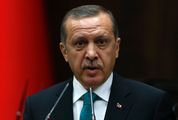



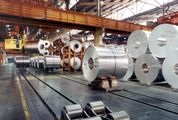

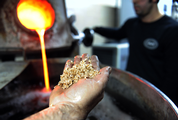




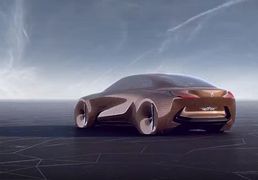

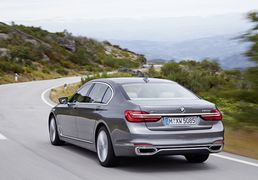
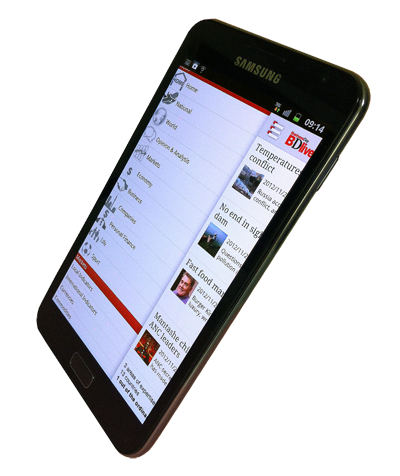




Change: 1.19%
Change: 1.36%
Change: 2.19%
Change: 1.49%
Change: -0.77%
Data supplied by Profile Data
Change: -0.19%
Change: 0.69%
Change: 1.19%
Change: 0.00%
Change: 0.44%
Data supplied by Profile Data
Change: 0.62%
Change: 0.61%
Change: 0.23%
Change: 0.52%
Change: 0.12%
Data supplied by Profile Data
Change: -0.21%
Change: -1.22%
Change: -0.69%
Change: -0.51%
Change: 0.07%
Data supplied by Profile Data